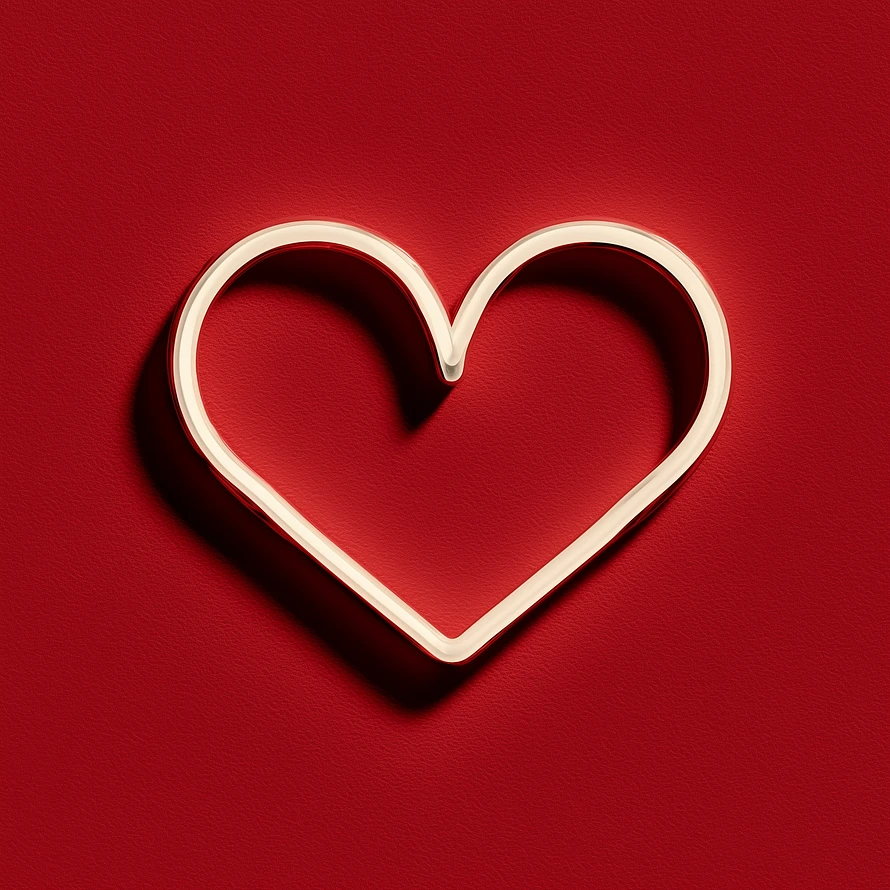💖 The Heart Shape: Origins, History, and Symbolism
The heart shape is one of the most instantly recognizable symbols in the world. It appears in everything from romantic emojis 💘 to Valentine's Day cards, jewelry, artwork, and global pop culture. But have you ever wondered where this iconic symbol came from—and how it came to represent love?
In this post, we explore the curious history, evolving meanings, and enduring power of the heart shape.
🔍 The Curious Origins of the Heart Shape
Contrary to popular belief, the classic heart shape (two rounded lobes meeting in a point) bears little anatomical resemblance to a real human heart. So where did it come from?
1. Ancient Seeds and Plants
One early theory suggests that the heart shape may have originated from the silphium plant, used in ancient Cyrene (a Greek colony in modern-day Libya) as a powerful herbal contraceptive. Coins from the 6th–5th century BCE depict seed pods of the plant in a shape strikingly similar to the modern heart. Over time, this association may have linked the shape with love, fertility, and intimacy.
2. Stylized Human Anatomy
Some art historians believe the heart shape evolved from medieval depictions of the human heart, often portrayed in religious and anatomical texts. Artists during the Middle Ages and Renaissance stylized the organ to reflect its spiritual and emotional significance rather than its physical appearance.
3. Symbolic Geometry
Others point to ancient geometric and mathematical symbolism—such as intersecting circles and leaves—as a potential influence. The heart shape may also have been inspired by ivy or fig leaves, both symbols of fidelity and eternity in ancient cultures.
📜 Medieval and Renaissance Adoption
By the 13th and 14th centuries, the heart shape began to appear in art and literature as a symbol of romantic love. One of the earliest known depictions of a heart as a symbol of romantic affection is found in the 1250 French manuscript Roman de la Poire, in which a lover offers his heart to a lady.
In the Renaissance, the heart shape gained further cultural traction. Religious art portrayed sacred hearts to symbolize divine love, while secular art and poetry increasingly connected the shape to earthly passion and courtly romance.
❤️ A Modern Icon of Love
In the modern era, the heart shape became standardized and globally recognized thanks to:
-
Valentine's Day traditions in the 18th and 19th centuries, when mass-produced cards used heart motifs.
-
20th-century media and marketing, especially in romantic films, pop music, and consumer goods.
-
The iconic "I ❤ NY" logo, designed in 1977, which helped turn the heart into a symbol of affection, not just for people but for places and ideas.
Today, we use the heart emoji (❤️) to express everything from friendship and gratitude to romantic attraction. It's a universal shorthand for love in the digital age.
💬 Symbolism Across Cultures
While commonly associated with romantic love, the heart shape has also taken on broader meanings:
-
Compassion and charity in religious contexts (e.g., the Sacred Heart of Jesus).
-
Unity and empathy in modern activism and health awareness campaigns.
-
Life and vitality, often used in logos and health-focused branding.
Across cultures, the heart resonates as a metaphor for emotional truth—the place where our deepest feelings reside.
💡 Final Thoughts
The heart shape’s journey from ancient fertility symbol to modern emblem of love is a fascinating example of how symbols evolve over time. What began as a stylized seedpod or a simplified anatomical drawing has grown into a universal expression of emotion.
So next time you draw or send a little ❤️, remember: you’re carrying forward centuries of history, symbolism, and sentiment—one beat at a time.

